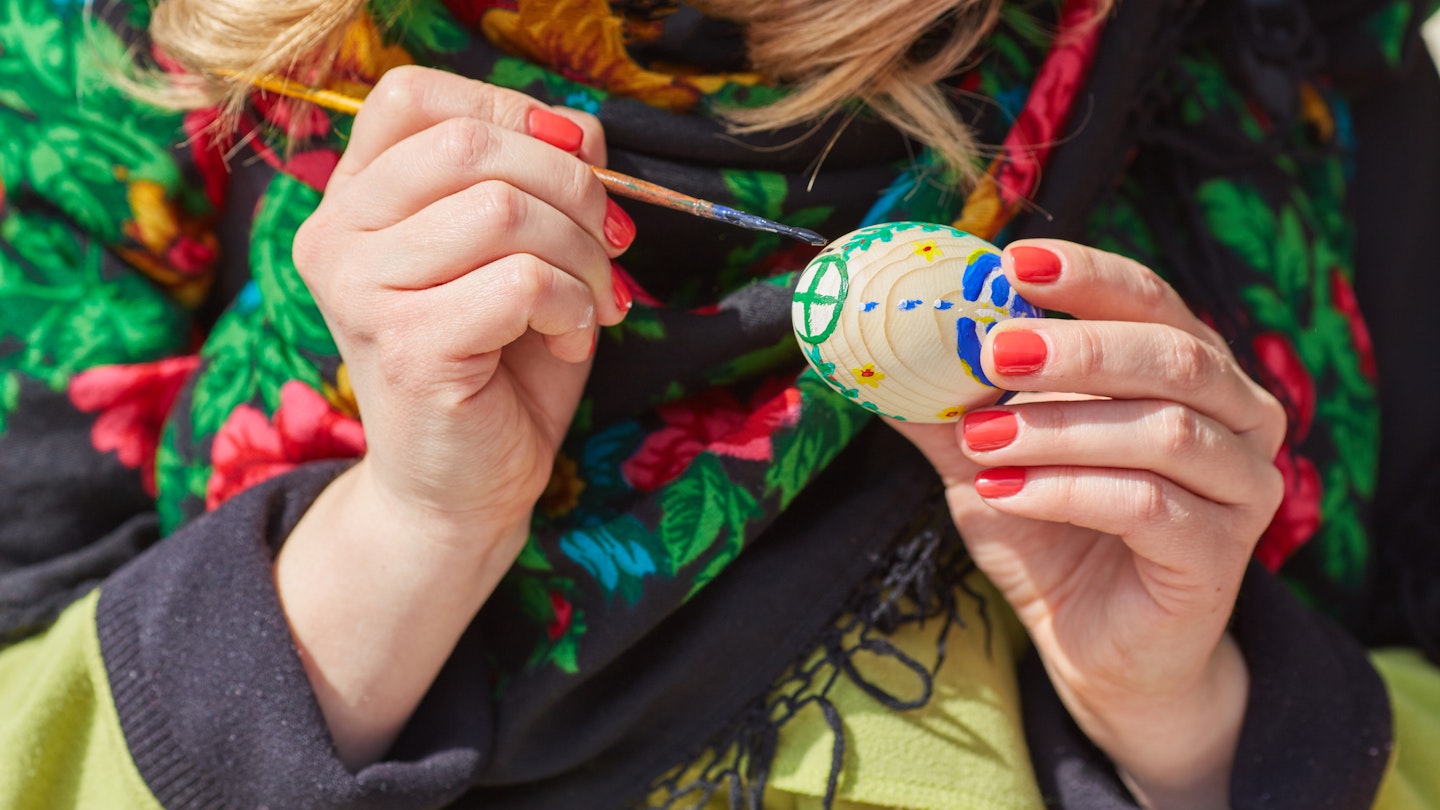Easter Traditions Across Europe
What do rockets, water fights, and ritual spanking have in common? They are all expressions of the infinite variety of Easter in Europe. To believers, this festival marks the death and resurrection of Jesus Christ. Church services, chocolate eggs, and family gatherings are common across Europe, but so are rip-roaring celebrations that date back to pagan times. Here are nine intriguing customs that are worth discovering.
Rocket Battles in Chios, Greece
Fireworks are common during midnight church services on Orthodox Easter Saturdays in Greece. However, on the island of Chios, Easter takes on an explosive flair. Two neighbouring parishes in Vrontados – Agios Markos and Panaghia Ereithiani – hold an annual competition to fire homemade rockets at each other’s steeples. Known as rouketopolemos (rocket war), this lively tradition injects excitement into the holiday. Although the volume of firepower has been toned down in recent years due to local objections, it remains a popular spectacle for tourists. Make sure to secure an ideal viewing spot ahead of time.

Passion Processions, Spain
Clad in pointed hoods and long robes, the penitents parading through Spanish towns at Easter may appear sinister to some. Nonetheless, these processions have been a part of Semana Santa (Holy Week) since medieval times, symbolic of the New Testament account of Jesus’ crucifixion. The distinct hood, known as a capirote, serves to conceal the wearer’s identity during public atonement. Madrid is a prime location to witness these processions on a grand scale. For a more chilling experience, head to the village of Verges in Costa Brava, where a ‘dance of death’ takes place on Maundy Thursday.

Midnight Mass & Egg Battles in Sofia, Bulgaria
The Bulgarian capital, with the magnificent Aleksander Nevski Cathedral at its center, offers a memorable experience during Orthodox Easter. Midnight Mass is the highlight of the celebration, drawing together dressed-up worshippers in a church filled with prayer and incense smoke to welcome Easter Sunday. Following this, families engage in an egg battle the next morning, competing with hard-boiled eggs to see whose shell withstands the best tap. Winning this contest is associated with good fortune for the year ahead.
Meditative Egg Painting, Ukraine
In Ukraine, the traditions of dyeing eggs date back millennia and are regarded as a symbol of renewal and life after death. Many use natural dyes, such as beetroot and onion skins, to create dark red eggs representing the blood of Jesus Christ. The artistic pysanky (decorated eggs) are covered in intricate patterns and Christian symbols drawn with beeswax. This heartfelt process can be meditative, providing a meaningful connection to the Easter spirit.
Egg Rolling & Glazed Buns, United Kingdom
In the United Kingdom, egg rolling on Easter Monday has been embraced as a long-standing tradition. Originating from Central Europe, this practice symbolizes the rolling away of the stone after Jesus’ crucifixion. In Preston, Lancashire, this activity has taken place for over a century and a half. Children compete at Avenham Park, where grassy slopes serve as the perfect location for rolling efforts. To top off this cheerful day, indulge in a hot cross bun, a delightful treat featuring raisins and cinnamon.

Holy Explosions in Florence, Italy
La Pasqua is celebrated with great enthusiasm across Italy, especially during Florence’s Scoppio del Carro (meaning ‘cart explosion’). This vibrant event begins with a flame ignited in the 11th-century Santi Apostoli church, which is then processed to the Duomo. This procession features locals in historical costumes and a wagon filled with fireworks, ultimately igniting a memorable display. The celebration unfolds on Easter Sunday, so it’s advisable to arrive early for the best view.
Well-Wishing Witches, Finland & Sweden
Much like trick-or-treating, Finnish and Swedish children celebrate Easter by visiting homes dressed as witches. Adorned in old clothes and face paint, these young tricksters receive sweets in exchange for using willow branches to ward off evil spirits. The lore varies by region; in much of Finland, the children take to the streets on Palm Sunday, while in Sweden, they emerge on Maundy Thursday, following the belief that this is when witches fly to commune with dark forces.

Traditional Spanking, Czech Republic
In many villages in the Czech Republic, a slap from a pomlázka (or in Slovakia, a korbáč) has become an Easter Monday tradition. Young men braid willow twigs into small whips, adorned with ribbons, to playfully strike women they fancy. Proponents of this quirky custom believe it brings youth and vitality. Interestingly, if the twig-whipper shows up after noon, he may be doused with cold water as a playful reprimand.
Frisky Water Play, Poland
In Poland, the tradition of lany poniedziałek (or ‘Wet Monday’) involves young men splashing eligible women with water as a playful lovemaking ritual. This custom dates back to ancient practices where effigies of pagan goddesses were ceremonially watered for a bountiful harvest. Today, however, it has transformed into a full-on water fight in many villages. Interestingly, this tradition is celebrated in Polish communities in the USA, particularly on Dyngus Day, with Buffalo, New York hosting a lively Easter Monday celebration.





